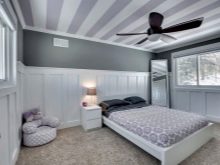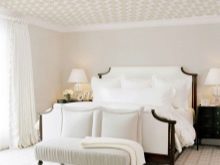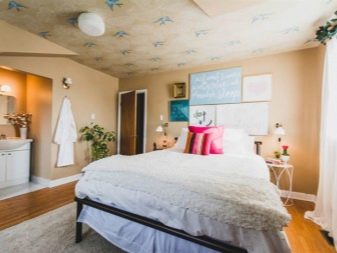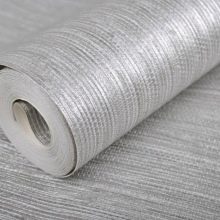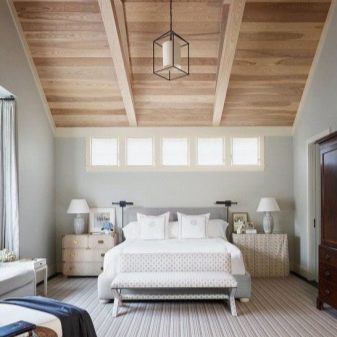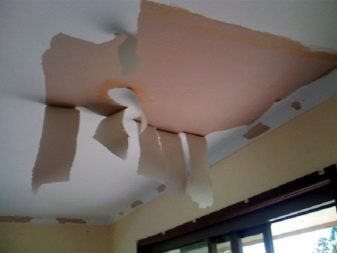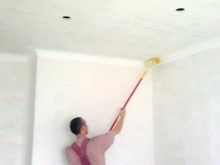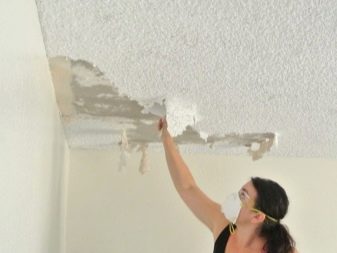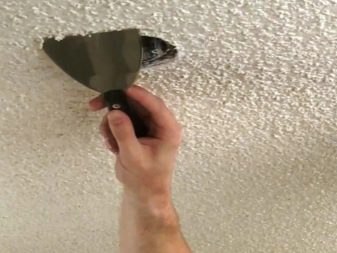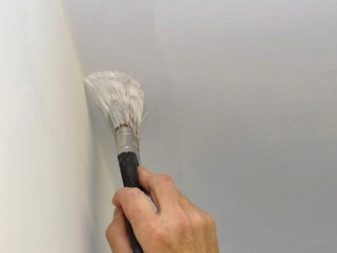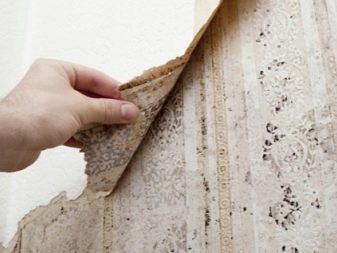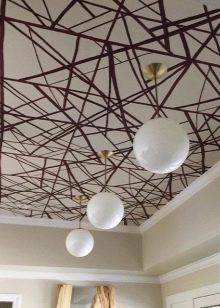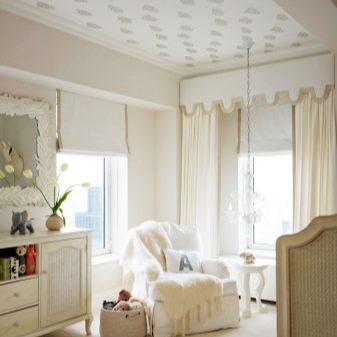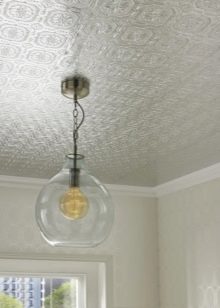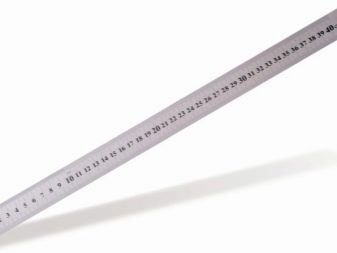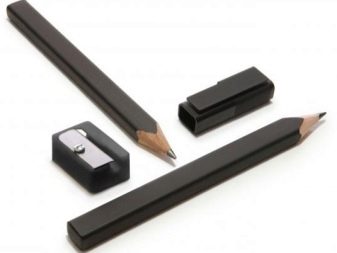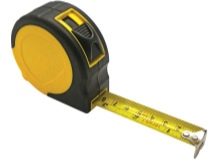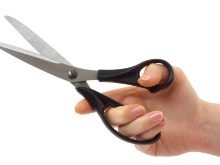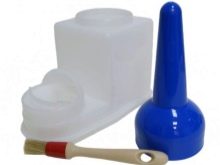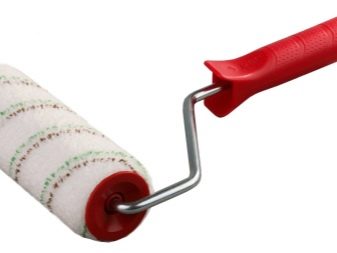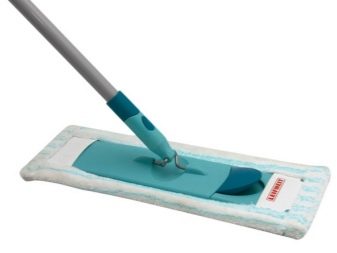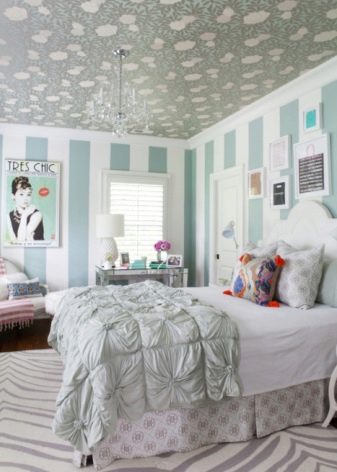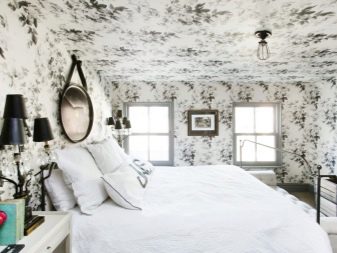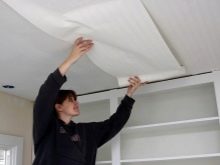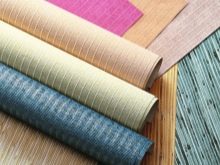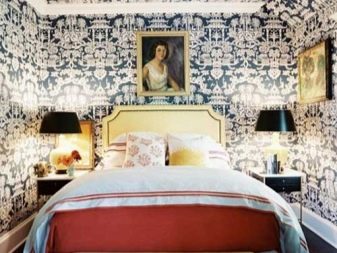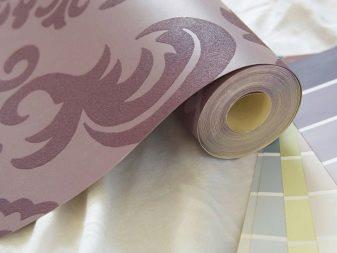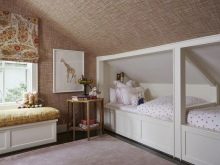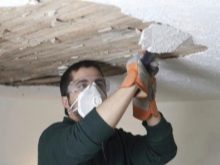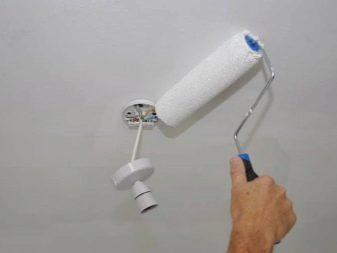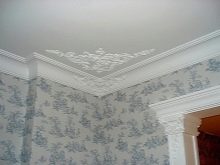How to glue wallpaper on the ceiling: technology and recommendations
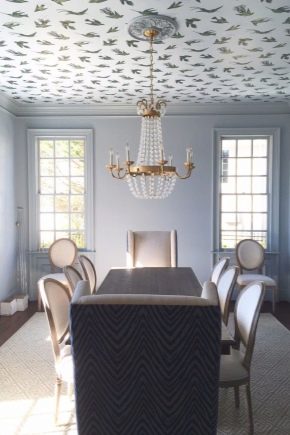
Ceiling wallpaper is considered one of the most popular types of modern finishes. They emphasize the interior of the room, filling it with notes of elegance and chic. Today, this material is in great demand in design, as it allows us to present a new life to a room with minimal financial expenses. In addition, wallpaper sizing is not a difficult process, and therefore everyone can do it.To do this, it is enough to purchase high-quality canvas and correctly perform the work technology.
How to choose?
The main point in finishing the ceiling wallpaper is the choice of material. Recently, the construction market is represented by a chic assortment of canvases that amaze with a variety of textures and shades.
To make the design of the room look unusual, you should purchase ceiling wallpapers not only of beautiful color, but also with the possibility of additional finishing or painting.
Traditionally, several types of decorative items are used for this, but they must be marked “for ceilings”.
The ideal option for such design are canvas on non-woven base. They are characterized by increased strength, protect the surface from cracking and are well suited for plasterboard bases. As for the color palette, it is determined on the basis of the characteristics of the room in which the glueing is planned. In this case, it is important to take into account the style of the interior, the decoration of the walls and the floor covering. For example, in brick or panel houses, the ceilings are low,therefore, it is recommended to use pastel shades for them in the ceiling decoration, since bright and dark colors will make the space uncomfortable and cold.
When buying paintings should also pay attention to their drawing or composition. Designers are advised to completely abandon coatings with alyapisty ornaments in favor of textured and textured surfaces. Original look on the ceiling wallpaper with natural imitation of wood, plant weaving and natural materials. In addition, such paintings, if desired, can be repainted in any color. Painting is usually performed with a water dispersion emulsion, due to which the procedure for changing color is possible up to ten times.
Surface preparation
Ceiling wallpaper, unlike the wall, heavy and have a high density. Therefore, not only the aesthetic appearance of the canvases is important for them, but also proper adherence to the rules of gluing, on which the service life will depend. To keep the wallpaper well, you need to carefully prepare the surface of the ceiling, for this it should be cleaned and leveled. Such a procedure will help improve adhesion and make the base antiseptic protected.
Pasting of the ceiling can begin only if the following types of work have been previously performed:
- Cleaning the surface of the old layers of finish.
- Repairs. It involves the elimination of potholes and large defects on the ceiling.
- Primer. It needs to be carried out necessarily, as it will protect the basis from a fungus, a mold and will improve coupling.
- Strengthening the surface with glass fiber.
- Filling and grinding. It will provide the ceiling with perfect smoothness and hide all small irregularities.
In addition, from the room where you plan to sizing the wallpaper, you should take out all the furniture, remove the chandeliers, carpets, curtains, de-energize the room and close the doorways with film.
It will be difficult to decorate the ceiling yourself, so you should think over all the details of the work in advance and find yourself an assistant.
The technique of preparing the ceiling depends on the type of the previous coating, so it can be performed as follows:
- Removing whitewash. If a chalk layer remains on the surface, it is easy to wash it off with water. As for lime, it is considered an aggressive substance and is removed only with the help of special solutions, which include glue and soap.
- Removing old paint. Oil layers are eliminated by degreasing. A solvent or alcohol is suitable for this. If on the ceiling there are residues of other types of paint, then apply technical washes and remove them with a spatula.
- Clear previous wallpaper. It is enough to moisten the base with warm water and clean it.
- Often, after washing the ceiling, spots may occur on its surface. As a rule, these are traces of rust or mold. If they are available, it is impossible to start wallpapering, as stains will eventually appear on the new finish. Therefore, the base is initially treated with an antiseptic primer, then the rust is cleaned with copper sulfate solution.
Of course, a wooden ceiling or drywall is considered ideal for pasting wallpaper, but sometimes there is a traditional concrete slab surface. There may be large potholes and cracks. To eliminate such defects, it is necessary to apply a layer of plaster over the entire area of the base.
How to calculate the quantity?
The decoration of the ceiling should begin with the correct counting of materials, since their lack of glue will give a lot of negative consequences.For example, it will not be easy to purchase similar wallpapers, and a new batch may differ significantly from the previous color and texture. Therefore, it is necessary to have information about the number of rolls in advance. If several years ago the canvases were made in standard sizes of 0.5 * 10 meters, today many manufacturers have presented non-format products.
To facilitate the process of sticking the ceiling, use the wallpaper of the following types:
- 0.53 * 12 meters. The most common commercially rolls. This, as a rule, paper and fabric wallpaper.
- 0.74 * 10 meters. Products made in the UK and Italy.
- 1.06 * 25 meters. Meter canvas based on non-woven fabric.
To calculate the material, you first need to find out the area of the roll, which can be pasted over the ceiling. For this, the length of the product is multiplied by its width. It is also necessary to pay attention to the shape of the room. If it is not rectangular and has many niches, protrusions, then you will have to additionally purchase wallpaper. If for decoration of the ceiling, nevertheless, canvases with an ornament and pattern are chosen, then it is necessary to calculate the length of the repeating composition and add it to the length of the ceiling.
For decoration pattern requires a lot of rolls, as in the process of gluing will trim. If you do not follow the ornament, the surface will not be aesthetic.
Materials and tools
Finishing the ceiling wallpaper, like any other type of construction work, it is impossible to imagine without the presence of appropriate tools. Prior to the beginning of pasting it is important to think over all the details, including the choice of high-quality materials, the technology of design and, of course, prepare everything necessary for the implementation of the “creative process” itself. As a rule, the traditional set of tools consists of the following items:
- Carpenter pencil. It is used to mark canvases. It is not recommended to use ballpoint pens and markers for these purposes, as they may appear on the outer side of the wallpaper.
- Ruler. Thanks to it, it is convenient to draw straight lines.
- Stationery knife. It helps to quickly cut the wallpaper, cut the canvas in the corners.
- Scissors. They are used for trimming paintings in inaccessible places.
- Construction Roulette. Allows you to correctly measure the area and length of the bands.
- Square.
- Level.
- Capacity for glue.
- Wallpaper brush
- Construction mixer.
- Putty knife. Used for trimming wallpaper at the joints.
- Roller. Helps to smooth the strip and well "kicks out" air bubbles.
In addition, the work will also need wet and dry rags, washcloths, mops and brushes.
How to paste: technology description
The method of gluing ceiling wallpaper depends on the type of paintings, as they differ in their structure and density. It is worth noting immediately that it is impossible to paste over a given surface in a room alone. Therefore, if the design of the ceiling is planned to be done by hand without hiring craftsmen, first of all it is necessary to independently calculate the material consumption, plan the stages of the work and find reliable assistants.
It is worth starting the process with preliminary surface preparation. As for the sizing technology, it is different for each wallpaper and is as follows:
Non-woven wallpaper
Represent a material in rolls, which consists of two layers - a polymer coating and non-woven fabric.They are durable in operation, well "breathe" and do not absorb odors. Before using them, the ceiling is thoroughly cleaned of dirt and old surface, then the base is primed and plastered. The working area must be firm, dry, flat and durable.
The canvases are measured and cut into strips with a small margin of 10 cm. For products with a pattern, it is important to consider the height of the report. All cuts need to be numbered and glued consistently. Sometimes these wallpapers are fixed by the reverse method.
In the room where the work takes place, there should be no drafts.
Glue in this case is applied only to the ceiling, and the strips are recommended to be treated with a special solution that will protect them from the formation of mold and mildew.
Vinyl wallpapers
They are glued similarly to non-woven on a previously prepared ceiling, the pattern on the strips should coincide as much as possible. The cut strips are stacked on top of each other. Moreover, their number should not exceed 10 pieces. Glue is applied both on the base itself and on the wallpaper, the time of their swelling is indicated on the rolls.
Start pasting best from the corner. It is important to ensure that the strips are attached butt and glue does not fall on the upper side of the canvases.The remains of material should be cut with a knife and blot them with a dry cloth.
Paper wallpaper
This type of products is fixed on the ceiling in two ways - without overlap and butt. If the sheets are glued along the direction of the room, the number of stitches will be minimal, but the process itself will be time consuming and difficult. As for pasting in width, it is much easier and resembles the work with wall decoration. Glue is applied both on the ceiling and on the canvas. To simplify the supply of the impregnated sheet to the surface, it is recommended to fold it on the floor in the form of an accordion.
Is it possible to glue on tiles?
In some cases, when pasting wallpaper, you may encounter such a problem as the presence of decorative tiles on the ceiling. It is a material with a porous structure that provides excellent thermal insulation. The surface of such a tile is smooth, so it is not an obstacle for gluing fabrics.
The only thing that is required before its coverage is to perform the following preparatory work:
- Remove previous layers of putty and finish.
- Ceiling treatment primer.
- Base leveling with gypsum-based mixtures.
This option is only possible if the tile is made of polystyrene. With other products, wallpapering is not recommended, as chemical reaction with glue is possible.
Sometimes small gaps can be present between the tiles, they can be easily removed with a putty and acrylic primer.
Important points
The main task when pasting wallpaper to the ceiling is considered to be their secure fixation, otherwise all the work can go down the drain. Therefore, first of all, you should worry about preparing the surface of the ceiling. To prevent the strips from peeling off, they need to be “planted” on high-quality glue, observing all the technology works.
Recently, designers in the interior of the premises use tension structures in combination with decorative canvases. They look beautiful and unusual. If the room has walls, rounded at the corners, they can be originally decorated. To do this, baguettes fit two types of plastic or natural material. Initially, it is worth sticking wallpaper, and then after they have completely dried, attach decorative elements.
Tiling the ceiling alone will be difficult, so it is recommended to use additional help.If the sticking occurs in proud loneliness, then you should not be upset, to simplify this process, you need to fold the canvas on the floor with an accordion, and then gently flatten it on the ceiling. At the end of the work room can not be ventilated for at least 10 hours.
On how to glue wallpaper to the ceiling, you will learn from the following video.
